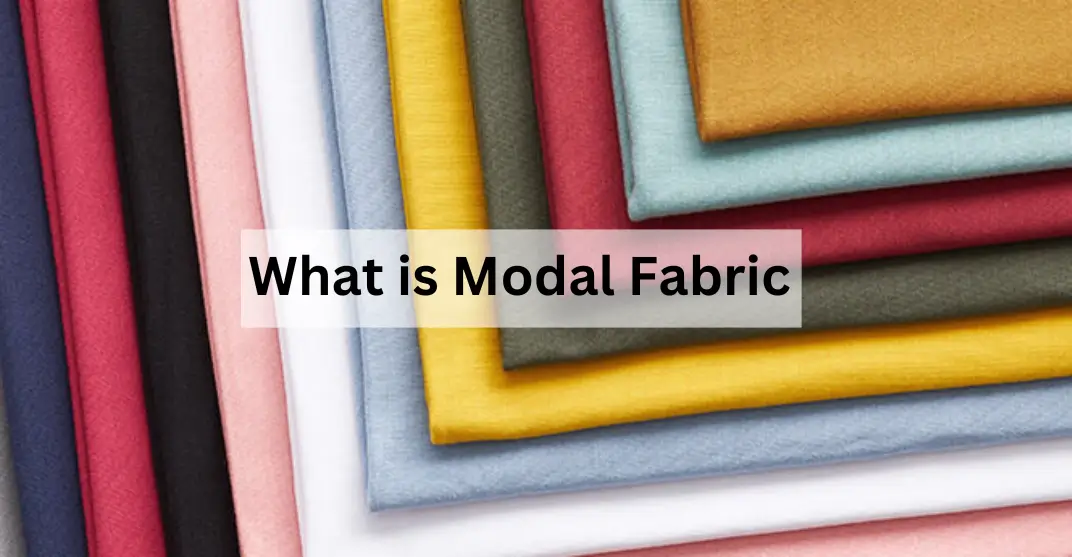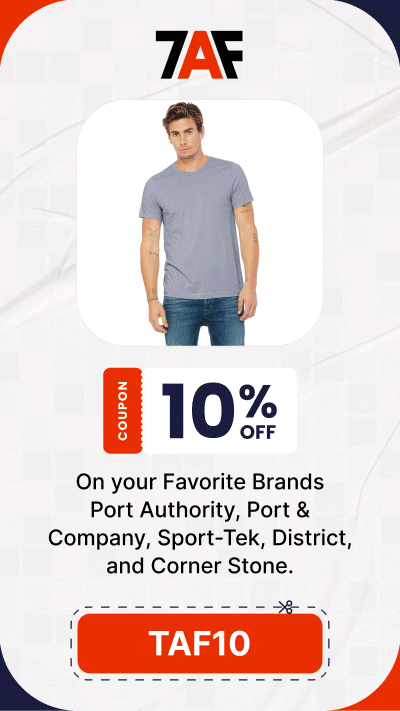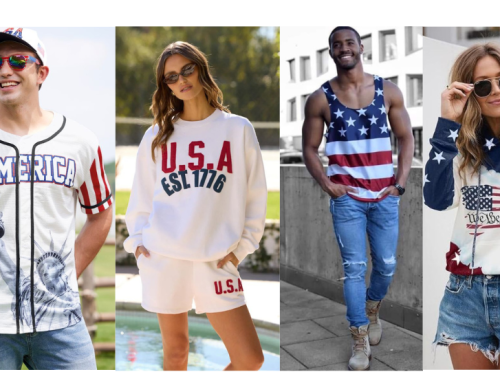
Imagine a fabric that’s as soft as silk, more breathable than cotton, and durable enough to withstand countless washes—that’s modal fabric. Whether you’re slipping into a buttery-soft T-shirt, cozying up in luxurious sheets, or wearing high-performance activewear, modal fabric enhances comfort like no other.
But what exactly is modal fabric, and why is it gaining popularity in the fashion and textile industry? This innovative material is not only moisture-wicking, wrinkle-resistant, and eco-friendly, but it also offers a luxurious drape and unmatched softness. In this guide, we’ll explore what modal fabric is made of, how it compares to cotton, viscose, and lyocell, and why it’s a game-changer for modern clothing and home textiles.
What Is Modal Fabric?
Modal fabric is a semi-synthetic fabric made from beech tree pulp. It is a type of rayon, but unlike traditional rayon, modal is more durable, breathable, and eco-friendly. Some key characteristics of modal fabric include:
- Exceptionally soft and lightweight, making it ideal for clothing and bedding.
- Moisture-wicking properties, which keep you cool and dry.
- Resistant to shrinking, fading, and pilling, ensuring longevity.
- Eco-friendly due to its low environmental impact compared to cotton.
Modal fabric is often blended with cotton, spandex, or polyester to enhance its properties, making it a versatile and high-performance textile for various applications.
How Is Modal Fabric Made?
The process of making modal fabric involves several steps, starting with harvesting beech trees and ending with a soft, luxurious textile ready for production. Here’s a step-by-step guide to modal fabric production:
- Harvesting Beech Trees – Beech trees are grown and harvested, often in sustainably managed forests.
- Extracting Cellulose – The wood pulp is broken down to extract cellulose fibers, which form the base of modal fabric.
- Chemical Processing – The cellulose is treated with non-toxic chemicals to create a smooth, flexible fiber.
- Spinning into Fibers – The processed material is spun into long, fine threads.
- Weaving into Fabric – These threads are woven into soft, breathable textile sheets.
- Dyeing and Finishing – Modal fabric is dyed and treated to enhance its color retention and softness.
Unlike traditional rayon, the modal production process uses a closed-loop system, meaning that water and chemicals are recycled, reducing waste and making it more sustainable.
Key Benefits of Modal Fabric
Why is modal fabric one of the most sought-after textiles today? Here are 12 reasons why you should consider adding modal to your wardrobe and home:
-
Ultra-soft and Luxurious Feel
Modal is often compared to silk and Egyptian cotton due to its incredibly soft texture. It feels gentle on the skin, making it perfect for underwear, pajamas, and bedsheets.
-
Highly Breathable
Unlike synthetic fabrics, modal allows air to circulate freely, preventing sweat buildup and keeping you cool in hot weather.
-
Moisture-Wicking & Quick-Drying
Modal absorbs 50% more moisture than cotton, making it a great choice for sportswear, underwear, and activewear.
-
Durable & Long-Lasting
Unlike traditional rayon, modal fabric is stronger and more resistant to wear and tear, ensuring longevity even after multiple washes.
-
Wrinkle-Resistant
Modal naturally resists wrinkles and creases, eliminating the need for constant ironing.
-
Color Retention
Unlike some fabrics that fade over time, modal holds dye exceptionally well, keeping colors vibrant and fresh.
-
Lightweight and Flexible
Modal is incredibly lightweight, offering a soft, flowy drape that makes it comfortable to wear all day.
-
Hypoallergenic & Skin-Friendly
Ideal for people with sensitive skin, modal is naturally hypoallergenic, reducing irritation and allergies.
-
Sustainable and Eco-Friendly
Modal is made using a closed-loop process, meaning chemicals and water are recycled, making it less harmful to the environment.
-
Shrink-Resistant
Unlike cotton, modal maintains its original size and shape even after repeated washing.
How to Care for Modal Clothing
To keep the modal fabric soft and long-lasting, follow these care instructions:
- Wash in cold water with a gentle detergent.
- Avoid bleach or harsh chemicals, as they can damage fibers.
- Use a low-heat setting for drying or air drying to maintain softness.
- Store properly by folding instead of hanging to prevent stretching.
What is Micro Modal Fabric?
Micromodal fabric is made from ultra-fine beech tree cellulose fibers, making it even softer, lighter, and more luxurious than standard modal. It offers enhanced breathability and a silky-smooth texture, perfect for premium underwear and loungewear.
What is Micro Modal Fabric Made Of?
Micromodal fabric is made from ultra-fine beech tree cellulose fibers. These fibers are thinner and more refined than standard modal fibers, resulting in a fabric that is even softer and more luxurious.
What is Modal Fabric vs Cotton?
When comparing modal fabric vs cotton, modal stands out for its:
- Softness: Modal is softer and silkier than cotton.
- Moisture Absorption: Modal absorbs 50% more moisture than cotton, making it ideal for activewear and undergarments.
- Durability: Modal is more resistant to shrinking and pilling compared to cotton.
- Eco-Friendliness: Modal is made from renewable beech trees and uses less water in production than cotton.
However, cotton is more widely available and often less expensive than modal.
Modal vs. Viscose: What’s the Difference?
Modal and viscose both originate from plant-based fibers, but there are key differences between the two. Here’s a comparison table:
Verdict: If you’re looking for a fabric that’s softer, stronger, and more eco-friendly, modal is the better choice.
| Feature | Modal Fabric | Viscose Fabric |
|---|---|---|
| Softness | Softer, silkier feel | Smooth but less soft than modal |
| Durability | More durable, resists wear | Less durable, weakens when wet |
| Moisture-Wicking | Absorbs 50% more than cotton | Absorbent but retains water |
| Wrinkle Resistance | Wrinkle-resistant | Prone to wrinkling |
| Eco-Friendliness | Sustainable production | Higher chemical use |
Modal vs. Lyocell: How Do They Compare?
Both modal and lyocell are part of the rayon family, but they have distinct differences. Let’s take a look at how they compare:
Verdict: Lyocell is slightly more sustainable, but modal offers a silkier, more luxurious feel.
| Feature | Modal Fabric | Lyocell Fabric |
|---|---|---|
| Production Process | Chemical-treated fibers | Made using non-toxic solvents |
| Breathability | Highly breathable | Extremely breathable |
| Moisture Control | Good absorption | Superior absorption |
| Eco-Friendliness | Sustainable but chemical use involved | More eco-friendly with less chemical processing |
| Softness | Silky, smooth feel | Slightly firmer, cotton-like texture |
What is the Frequency of Modal Fabric?
The frequency of modal fabric refers to its popularity and usage in the textile industry. Modal has gained significant traction in recent years due to its sustainability, comfort, and versatility. It is commonly used in:
-
Activewear
Modal’s moisture-wicking and breathable properties make it ideal for activewear. From yoga pants to running shorts, modal helps you stay dry and comfortable during intense physical activity.
-
Underwear and Sleepwear
The luxurious softness of the modal fabric makes it a favorite for underwear and sleepwear. Its lightweight nature offers breathability and comfort throughout the night.
-
T-Shirts and Casual Wear
Modal blends beautifully with cotton and spandex to create comfortable, stylish t-shirts and casual wear that can be worn every day.
-
Bedding
Modal is a popular fabric for sheets, pillowcases, and blankets due to its softness, breathability, and color retention.
-
High-End Fashion
Fashion designers often turn to modal for high-end garments because of its drape, feel, and versatility in various styles.
Modal’s Eco-Friendliness: Why It’s a Sustainable Choice
One of the key selling points of Modal is its eco-friendly production. Unlike cotton, which requires large amounts of water and pesticides, modal is made from renewable resources—namely, beech trees. The closed-loop system used in the modal manufacturing process ensures that most of the water and chemicals are recycled, greatly reducing environmental impact.
Modal is also biodegradable, so if you’re looking for a fabric that will eventually break down and not contribute to waste, modal is a great choice.
The Best Place to Buy Modal Fabric Clothing
For high-quality modal fabric clothing, The Apparel Factory is the best choice, offering bulk and wholesale options with top-tier customization services like screen printing, embroidery printing, heat transfer, applique, and laser-etching. Whether you’re a retailer, brand, or individual, their premium modal apparel ensures comfort, durability, and style. They also provide exclusive discounts on large orders, making it cost-effective to get customized modal fabric clothing tailored to your needs.
Popular Brands That Use Modal Fabric
Top brands known for using modal fabric include Port Authority, Port & Company, Sport-Tek, District, and CornerStone, all available at The Apparel Factory. These brands offer high-quality modal fabric apparel, from soft T-shirts and activewear to premium loungewear and workwear. Whether you’re looking for bulk orders, wholesale pricing, or custom designs, The Apparel Factory provides the best options for businesses and individuals alike.
Conclusion
If you’re looking for a fabric that combines luxury, comfort, and eco-friendliness, modal is an excellent choice. Whether you’re after breathable activewear, super-soft pajamas, or stylish t-shirts, modal fabric offers versatility and performance. Plus, its sustainability makes it a great option for environmentally conscious consumers.
By choosing modal, you’ll enjoy long-lasting, comfortable clothing while also making a more eco-friendly choice. Ready to add modal fabric to your wardrobe? Check out our collection of high-quality modal clothing today at The Apparel Factory!
Published on:
February 20, 2025




